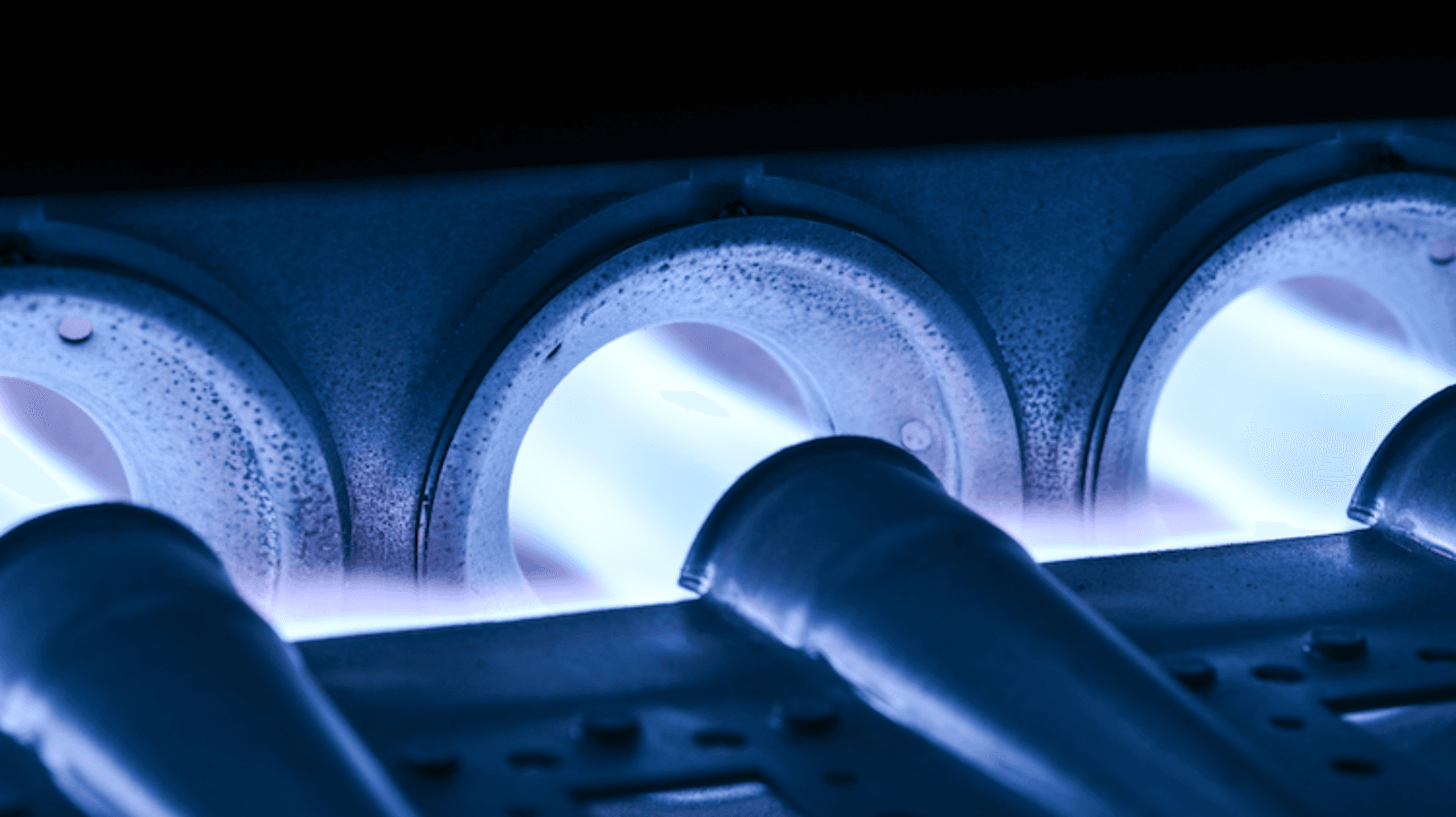Solar Cells with a Hot Difference
by Alan S. Brown
Most solar cells transform sunlight into electricity. At Berkeley, researchers are doing the same thing with light from white hot furnaces

The Author
The Researcher
Like many successful researchers and entrepreneurs, Eli Yablonovitch thrives by going against perceived wisdom. So when he says that he can turn light into electricity with 50 percent efficiency, it is worth paying attention. Yablonovitch, a member of the Kavli Energy NanoScience Institute at Berkeley, has developed a breakthrough thermophotovoltaic (TPV) cell. It works like a conventional photovoltaic (solar) cell, but instead of using sunlight, which loses energy before it gets to Earth, his TPV absorbs high-energy photons—particles of light—from white hot heat sources.
Until now, TPV efficiency—about 23 percent—has been too low for practical use. Yablonovitch’s prototype reaches 29 percent and he expects better results soon. “We think it can be 50 percent efficient,” he said. “That’s not theoretical, but based on improvements we already know how to make.”
Efficient TPVs could keep drones aloft for days and run deep space probes. They could also produce electricity from home furnaces and boilers. Yablonovitch achieved this giant leap by doing what he has always done: exploiting what solar cells, LEDs, and lasers have in common.
Solar Cells
Yablonovitch dived into solar cells in 1979, when he gave up his professor’s position at Harvard University to work for Exxon Research, then a hotbed of renewable energy investigation. At the time, researchers made solar cells thick, so light had more room to interact with their silicon. Yablonovitch realized that if he roughened the rear of the cells, the light would ricochet inside, giving it more chances to interact and produce electricity. “This meant that every panel could be 50 times thinner, which made solar cells much cheaper,” he said.
It was not enough to make them economical and Exxon lost interest. Yablonovitch decamped for Bell Communications Research to work on semiconductor LED lasers. To Yablonovitch, LEDs and solar cells were two halves of the same semiconductor puzzle. One converted light into electricity, the other turned electricity into light. “Nowadays, it seems obvious that they were related,” he said. “Not then. People thought I was a little crazy.”
Lasers work by jolting a crystal with electricity. This pushes electrons temporarily out of their orbits. When they fall back, they emit a photon that forms the laser beam. Researchers could do that with LED semiconductors, such as gallium arsenide, but GaAs lasers needed lots of power and degraded quickly.
Most researchers thought the solution was to grow better GaAs crystals. Yablonovitch went the other way.
He replaced some of GaAs’s gallium with indium, a larger atom. This put a strain on the semiconductor. Instead of degrading it, indium changed the electron orbits, so lasing took less power. Today, this technique is used in nearly all the world’s LED lasers.
A great LED
Yablonovitch moved to UCLA in 1992. In 2001, he began launching startups. One, Ethertronics, has shipped more than 2 billion cellphone antennas. Two others, Luminescent and Luxtera, were acquired by larger companies. He joined UC Berkeley in 2007 and soon founded Alta to make GaAs solar cells.
“Gallium arsenide was regarded as too expensive,” Yablonovitch said. “I realized that it absorbs light 10,000 times more strongly than silicon, so you could make it 10,000 times thinner. No matter how expensive it is, if you’re using 10,000 less material, it’s going to be cheaper than silicon.”
Alta’s solar cells set the world efficiency record in 2011.
The secret to his success, Yablonovitch said, is that “a great solar cell needs to be a great LED.” Great LEDs, he explained, use “amazingly good” mirrors to reflect out any light that does not immediately exit the LED. It turns out that the best solar cells reflect 2 percent of their energy as light. When Alta perfected a mirror to do that, it achieved a startling jump in efficiency. Today, Alta’s solar cells power drones and may one day help repeaters bring radio to remote areas.
TPV
Alta’s success with mirrors led Yablonovitch to thermophotovoltaic cells. “We thought we could use mirrors to reflect low-energy photons back to the heat source to pick up more energy,” he said.
The mirror enabled him to boost TPV efficiency to 29 percent. He believes proven techniques can lift that to 50 percent. Efficient TPVs could replace heavy batteries in some applications. Combined with a small furnace, they could keep a drone flying for days. Used with hot radioactive pellets, they could run deep space probes for years. At home, TPVs could produce electricity from gas furnaces and water heaters.
Many years of research are required to turn prototype TPV cells into commercial products, Yablonovitch warned. Yet, given his track record, don’t bet against seeing them soon.